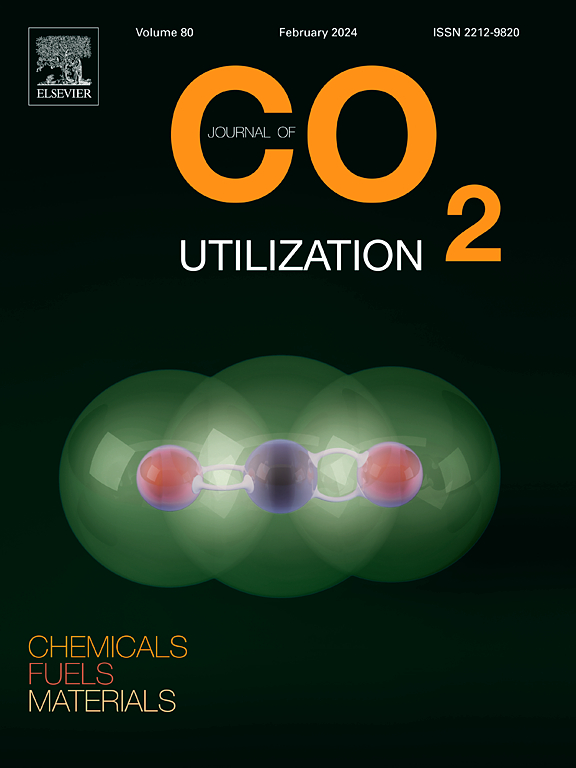Effect of Ga doping on the catalytic performance of Zn-ZSM-5 for CO2-assisted oxidative dehydrogenation of C2H6
IF 7.2
2区 工程技术
Q1 CHEMISTRY, MULTIDISCIPLINARY
引用次数: 0
Abstract
Using a low silica-to-alumina ratio NaZSM-5 zeolite as the support, a bimetallic modified catalyst, GaxZnZ5, was prepared through ion-exchange method for CO2-mediated oxidative dehydrogenation of C2H6 (CO2-ODH). Based on systematic characterization and evaluation, it was found that Zn is the primary active component in the catalytic system for activating C2H6, but it is merely active towards CO2, leading to rapid catalyst deactivation. Under the influence of Ga species, CO2 can readily engage into the reaction network. During the initial stage of the reaction, the activated CO2 primarily participants in dry reforming with C2H6-x species that rapidly formed on highly active Zn sites. However, the rapid cleavage of C-H bonds on these Zn sites leads to significant carbon deposition and subsequent deactivation. Following this rapid deactivation phase, CO2 becomes involved in the reaction through the reverse water-gas shift (RWGS) reaction and carbon elimination reactions, thereby shifting the reaction equilibrium towards C2H4 formation while alleviating the accumulation of carbon deposition and thus enhancing stability. With the optimum catalyst (Ga0.27ZnZ5), excellent and stable performance with 22.64 % C2H4 yield and nearly 100 % selectivity could be achieved after an induction period of ca. 100 minutes, these are among the highest values reported so far.
Ga掺杂对Zn-ZSM-5催化co2辅助C2H6氧化脱氢性能的影响
以低硅铝比NaZSM-5沸石为载体,采用离子交换法制备了双金属改性催化剂GaxZnZ5,用于co2介导的C2H6 (CO2-ODH)氧化脱氢反应。通过系统表征和评价,发现Zn是催化体系中活化C2H6的主要活性组分,但仅对CO2有活性,导致催化剂快速失活。在Ga的影响下,CO2很容易加入到反应网络中。在反应初始阶段,活性CO2主要与C2H6-x组分进行干重整,C2H6-x组分在高活性Zn位点上迅速形成。然而,这些Zn位点上的C-H键的快速裂解会导致大量的碳沉积和随后的失活。在这个快速失活阶段之后,CO2通过逆水气转换(RWGS)反应和碳消除反应参与到反应中,从而使反应平衡向C2H4的形成转变,同时减轻了碳沉积的积累,从而增强了稳定性。最佳催化剂Ga0.27ZnZ5在诱导时间约为100 分钟后,C2H4产率达到22.64% %,选择性接近100% %,是迄今为止报道的最高性能。
本文章由计算机程序翻译,如有差异,请以英文原文为准。
求助全文
约1分钟内获得全文
求助全文
来源期刊

Journal of CO2 Utilization
CHEMISTRY, MULTIDISCIPLINARY-ENGINEERING, CHEMICAL
CiteScore
13.90
自引率
10.40%
发文量
406
审稿时长
2.8 months
期刊介绍:
The Journal of CO2 Utilization offers a single, multi-disciplinary, scholarly platform for the exchange of novel research in the field of CO2 re-use for scientists and engineers in chemicals, fuels and materials.
The emphasis is on the dissemination of leading-edge research from basic science to the development of new processes, technologies and applications.
The Journal of CO2 Utilization publishes original peer-reviewed research papers, reviews, and short communications, including experimental and theoretical work, and analytical models and simulations.
 求助内容:
求助内容: 应助结果提醒方式:
应助结果提醒方式:


